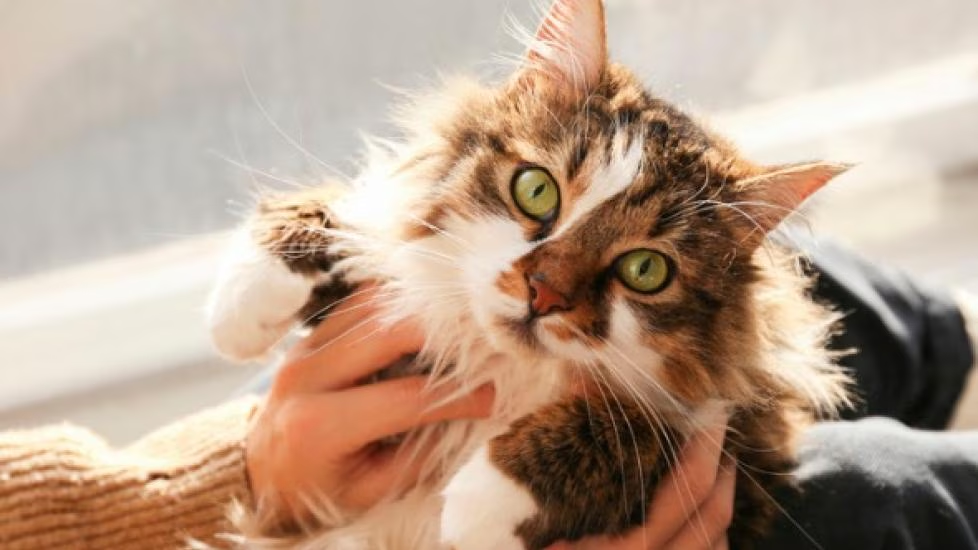Can Cats Suffer from Separation Anxiety? Here’s What You Need to Know
Cats, known for their independent nature, are often perceived as creatures who can entertain themselves when left alone. However, just like dogs, some cats can experience separation anxiety. This condition, characterized by extreme distress when left alone, is more common than you might think. Understanding the causes, symptoms, and solutions can help you provide the best care for your feline friend.
What is Separation Anxiety in Cats?
Separation anxiety in cats refers to a behavioral condition where a cat becomes overly distressed when separated from their owner or caregiver. This anxiety can manifest through various behavioral changes and can severely affect the cat’s well-being. Although cats are known for being more solitary than dogs, their bond with their human companions can be incredibly strong, leading to separation anxiety in certain circumstances.
What Causes Separation Anxiety in Cats?
Several factors can contribute to a cat developing separation anxiety. While it’s not entirely understood why some cats develop this condition, there are common triggers:
- Change in Environment
Moving to a new home or altering the familiar environment can lead to stress. Cats thrive in routine and consistency, and a sudden change can disrupt their sense of security. - Loss of a Companion
The death of a fellow pet or even the departure of a family member can trigger separation anxiety. Cats that were particularly close to another pet may feel lost or lonely when they are no longer around. - Change in Caregivers
If a cat becomes attached to one specific person, they may experience anxiety when left alone or when another person becomes the primary caregiver. - Lack of Socialization
Cats that were not properly socialized as kittens may develop anxiety as they grow older, especially if they were not accustomed to being alone for extended periods. - Health Issues
Sometimes, anxiety in cats is a symptom of underlying health issues, such as hyperthyroidism, which can cause restlessness. Always consult your vet to rule out medical causes for your cat’s behavior.
Symptoms of Separation Anxiety in Cats
Recognizing the signs of separation anxiety in cats is crucial for addressing the issue early. Common symptoms include:
- Excessive Vocalization
Cats with separation anxiety may vocalize excessively when left alone, often meowing or howling in distress. This vocalization is a way for them to express their discomfort. - Destructive Behavior
Cats might scratch furniture, chew on furniture, or damage items in the house in an attempt to express their anxiety. This behavior can be frustrating but is often a sign of deeper emotional distress. - Urinating or Defecating Outside the Litter Box
A cat with separation anxiety may urinate or defecate inappropriately as a response to stress. This behavior is a way for them to mark their territory when they feel abandoned. - Pacing or Restlessness
Cats may pace around the house or exhibit other restless behaviors when they sense their owner preparing to leave. - Overgrooming
Some cats will begin overgrooming when anxious, leading to bald patches or skin irritation. This behavior can become harmful if not addressed. - Refusing to Eat or Drink
Stress and anxiety can cause a cat to lose their appetite, which could lead to health issues if it persists for an extended period.
How to Help a Cat with Separation Anxiety
If your cat is showing signs of separation anxiety, there are several strategies you can use to help them cope with the stress:
- Establish a Routine
Cats find comfort in routine. Establishing a regular schedule for feeding, playtime, and rest can help reduce anxiety. Predictable times for these activities can create a sense of security for your cat. - Provide Distractions
Toys, puzzle feeders, and scratching posts can help distract your cat when you’re away. Interactive toys that dispense treats can keep them occupied for a while. - Create a Safe Space
Designating a specific area of the house as your cat’s safe space can provide them with a retreat when they feel anxious. This space should have their bed, favorite toys, and a litter box to create a secure environment. - Use Calming Products
There are various calming products available for cats, including pheromone diffusers (like Feliway), calming collars, and sprays. These products can help reduce anxiety by mimicking the comforting pheromones that cats release naturally. - Gradual Desensitization
Gradual desensitization involves slowly getting your cat used to your absence. Start by leaving them alone for short periods of time and gradually increase the duration as they become more comfortable with being left alone. This process can take time, but consistency is key. - Provide Companionship
If your cat has suffered the loss of a companion, you may consider adopting another pet. However, it’s important to ensure that both animals are compatible and that your cat is not overwhelmed by the new addition. - Consult a Veterinarian
If your cat’s anxiety is severe or does not improve with behavioral modifications, it’s time to consult a veterinarian. In some cases, medication may be necessary to help manage anxiety. Your vet may prescribe anti-anxiety medications to help your cat cope with the distress.
Conclusion
While cats are often considered independent animals, some can experience separation anxiety, which can have a significant impact on their quality of life. By recognizing the symptoms early and implementing strategies to help alleviate anxiety, you can improve your cat’s emotional well-being. Creating a routine, providing distractions, and seeking professional help when needed can make a world of difference for a cat suffering from separation anxiety. Every cat is unique, so finding the right approach may take time, but with patience and care, you can help your cat feel safe and secure when you’re not around.

